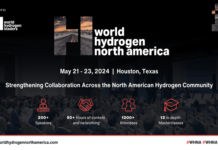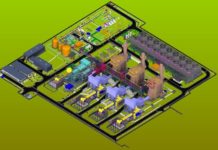With an estimated investment of $430m, stage II has been developed near the existing Rotokawa stage I power station. Stage II construction commenced in 2008 and the station was commissioned in May 2010.
Nga Awa Purua has a generating capacity of 132MW. It generates 1,100GWh a year with a base-load that is not sensitive to climate variations. Energy produced at the unit is sufficient to power 140,000 homes.
With addition of the new unit, the Rotokawa geothermal power station will generate about 162MW of electricity.
Rotokawa I
Rotokawa I was commissioned in 1957. It was bought by Mighty River Power in 2000 and is currently part of the 50:50 joint venture between Mighty River Power and Tauhara North 2 Trust, known as the Rotokawa joint venture.
The joint venture assets include a generation plant owned by Mighty River Power and the steam wells owned by the venture. The production capacity of Rotokawa I was expanded by 20% to 34MW in 2002.
“The Rotokawa II geothermal power station is located in the north-east of Taupo in New Zealand.”
The plant has four production wells, five injection wells, one 16MW back pressure steam turbine and four binary units of 6.5MW each.
Nga Awa Purua details
The Nga Awa Purua or Rotokawa II consists of a flat single-storey building constructed on a hilly terrain. It was designed for a rated two-phase fluid flow of 45,000t a day with a maximum of 48,000t a day. Around 75% of the fluid is injected back into the wells after extraction at 320°C.
The production wells supply two-phase fluid with an energy enthalpy of 1,560kJ/kg. To accommodate to the reservoir conditions, the plant is designed to cover the range of enthalpy and non-condensable gas (NSG) content.
The power station houses steam separation system (SSS) and power generation facility (PGF). The SSS separates steam and brine, removes impurities in the steam such as volatile silica and delivers purified steam to the turbine.
The generator is of totally enclosed water to air-cooled (TEWAC) type with a brushless exciter.
The project houses six production wells of 2,000m-2,500m deep and four injection wells of up to 3,000m deep.
Two-phased production pipelines connect the production wells to a separator station. These pipelines are 9km long, 1m above the ground. They are covered with 50mm thick thermal insulation.
Water for cooling is sourced from Waikata River situated 1km away from the plant site. Nga Awa Purua is connected to the existing 220kV transmission lines of Rotokawa I which run directly above the field.
The plant
Nga Awa Purua features the largest single-shaft geothermal turbine in the world. It has a triple pressure inlet, single casing and shaft, a bottom exhaust, and a double flow high and low-pressure sections. The blades are 31.4in-long last-stage blades.
“Nga Awa Purua has a generating capacity of 132MW.”
The turbine alone weighs 70t and with the casing it weighs 210t. It has “triple flash” and is custom designed to make efficient use of the Rotokawa steam field.
Steam is fed into the turbines via inlet pipes. The small blades at the centre of the turbine are designed for high-pressure steam and the big blades on the sides for the low-pressure steam. The turbine turns at 3,000rpm.
Development
The new plant was constructed on a turnkey basis by Japan-based Sumitomo Corporation under an engineering, procurement and construction contract.
Fuji Electric System supplied the steam turbines and was also responsible for conceptual and detail engineering, overall project management, installation, supervision, commissioning and start-up of the power station.
Fuji Electric System subcontracted Hawkins Construction to carry out building design and construction.













































